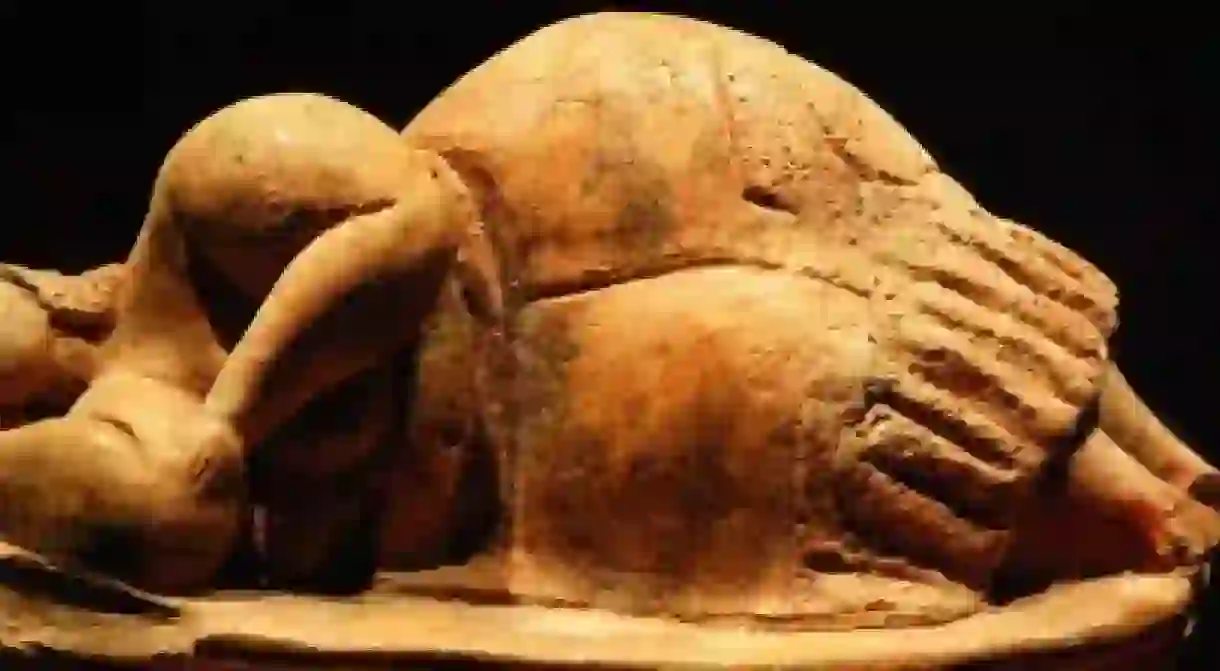The Best Museums To Visit In Malta

The Maltese islands, resting some 90km south of Sicily, make up one of Europe’s smallest and most southern countries. Beyond the very rich and well-preserved remains of Malta’s prehistory, the diversity of its occupying rulers and the traces they left behind bestows the country with a layered history and considerable cultural assets.

St John’s Co-Cathedral
Cathedral, Church
Rather sober-looking on the outside, baroque gem on the inside, St John’s Co-Cathedral is arguably the richest building commissioned by the Knights of Malta during their 250+ year stay in Malta. The walls of each of the eight chapels are lavishly decorated, but none so remarkable as the floor; a colourful stretch of tombstones densely packed with inlaid marble. For many, the visit’s highlight is Caravaggio’s only singed painting, The Beheading of St. John. Originally intended as an altarpiece, it rests at present in the adjacent oratory and makes part of the cathedral’s museum, which also houses significant collections of Flemish tapestries and choral books.
The National Museum of Archaeology
Museum

The National Museum of Archaeology, housed in the 16th century Auberge de Provence, holds a unique collection of artefacts excavated on the Maltese islands and offers an extensive introduction to the country’s prehistory. Given Malta’s rich heritage, the collection offers insights into life on the island across a large part of antiquity spanning from the Neolithic period (5000 BC) to the Phoenician period (400 BC). Early tools, pottery, and numerous representations of animals and human figures produced in this period are on display, including the famous ‘Sleeping Lady’ clay artifact, thought to represent the Mother Goddess of the Temple Period, 4000 – 2500 B.C.
Hal-Saflieni Hypogeum
The entrance to this UNESCO World Heritage Site sits on an unassuming street in one of Paola’s residential neighbourhoods. Commonly known as the hypogeum, literally meaning ‘underground’, it is the only example in Europe of an underground prehistoric sanctuary and burial site excavated around 3300 BC. A small but informative exhibition welcomes visitors before descending into the site itself, discovered by accident some 100 years ago. Rock-cut architectural features in the same style as the above ground temples of Hagar Qim, and Ggantija are remarkably well preserved, with some red ochre wall paintings still visible. Booking in advance is recommended since the site only takes 80 people per day.
Palazzo Falson Historic House Museum
Building, Museum
Palazzo Falson is a 13th-century private palazzo in Mdina and is its best preserved medieval building. It was formerly home to artist and collector Captain Gollcher (1889-1962), and in 2001 undertook extensive renovation to reopen as the museum we see today. Beyond the house’s architectural merits and fine views from its roof terrace, the building houses an exhibit of 17th-century paintings by Anthony van Dyck, Nicolas Poussin, and Bartolomé Esteban Murillo, as well as collections of oriental rugs, silverware, and weapons held in the armoury.
Malta Maritime Museum
Building, Museum
Housed in the Old Naval Bakery, occupying an imposing position on Birgu’s waterfront, the Malta Maritime Museum is the country’s biggest museum. The building, the first in the country designed to cater for the demands of an industrial empire, is itself architecturally significant. Behind its walls, the exhibit charts Malta’s maritime history through a collection of over 20,000 artefacts, each of which reveal some aspect of the island’s continuous relation with seafaring and the Mediterranean region. Military canons, steam engines, Roman anchors and traditional Maltese boats can all be found inside.
The Fortress Builders Fortifications Interpretation Centre
Museum
Opened in 2013, the Fortifications Interpretation Centre is Malta’s latest addition to its many military museums. The institution sits somewhere between a museum and a resource centre, the idea being to give a comprehensive overview of the range and architectural development of fortifications built on the island, from the Bronze Age structure at Borg in-Nadur up to the British period. The static exhibit contains well documented models of fortified sites, accompanied by interactive displays and short audio-visual presentations. Above its three floors, a roof terrace offers lovely views of Valletta’s western bastions and harbour. Entrance is free.
National Museum of Fine Arts
Building, Museum

The National Museum of Fine Arts, soon to be relocated and rebranded as MUZA, is currently housed in the Baroque Palace at the lower end of Valletta’s South Street. Its collection gives an overview of the art produced in Malta from the Late Medieval period up to the contemporary, including the largest collection of works by Mattia Preti, sculptures by the Maltese artist Antonio Sciortino (1879–1947), and JMW Turner’s only watercolour, a seascape of the grand harbour.













